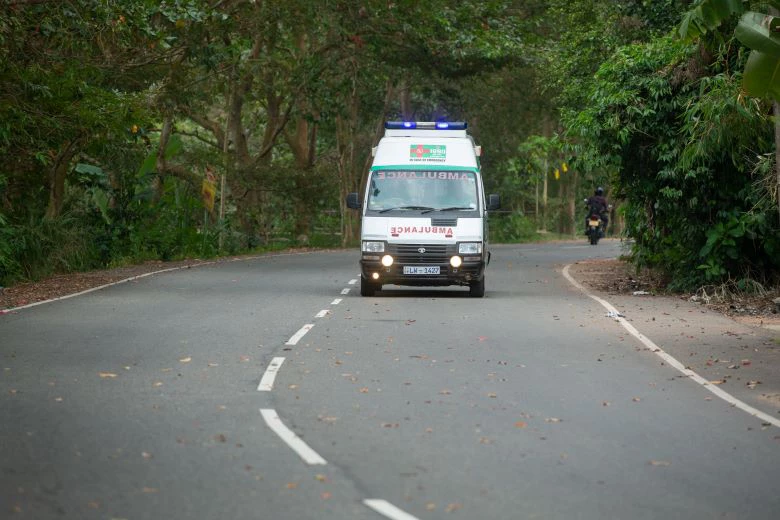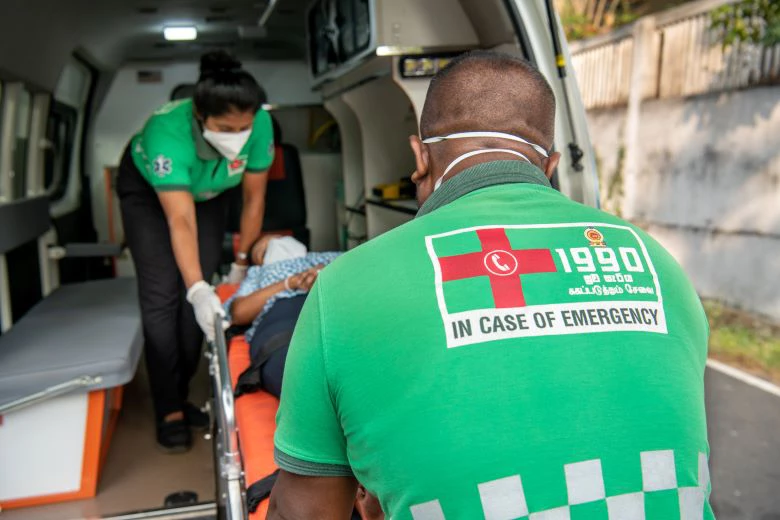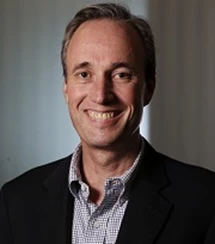 Ambulance driving down a quiet road in South Asia
Ambulance driving down a quiet road in South Asia
In the rural town of Morawaka located in Southern Sri Lanka, home to lush tea estates and paddy fields, Ramya is finally mother to a beautiful baby girl. She was born after a harrowing experience of an umbilical cord prolapse, a condition where the umbilical cord gets out of the body before the baby and risks cutting off the baby’s blood and oxygen supply. Ramya’s daughter was thankfully born safe—although in a surprising twist—aboard an ambulance, one of the world’s most digitally advanced and free ambulance services in Sri Lanka called ‘1990 Suwa Seriya’.
Since its launch in 2016, 1.8 million Sri Lankan citizens in distress have dialed 1990 , and a Suwa Seriya ambulance has rushed them to the nearest hospital or primary care facility within 12 minutes of their call, one of the fastest response rates in the world for an ambulance service. In these seven years, Suwa Seriya has saved countless lives—providing citizens the highest level of pre-hospital care, reducing complications caused by delayed care, and enabling them to get back into the workforce in record time—making a positive contribution to the country’s economy.
South Asia is home to many development innovations, including in the delivery of social services through government-private sector-and civil society partnerships, and so 1990 Suwa Seriya stands in a proud tradition. What can we learn from its experience, so it can be replicated and scaled across other countries in the region?
Championing a unique operational model
Established through a dedicated Act of Parliament in 2018, 1990 Suwa Seriya is a government entity that operates with the agility and independence of a private sector organization, resulting in remarkable efficiency and setting new standards for government-delivered services. I remember first hearing about this service when I met with MP Harsha De Silva—he described the project as a testament to the power of bipartisan support, above the political fray and focused uniquely on saving lives.
To enable this single pointed focus, 1990 Suwa Seriya’s operation is end-to-end process driven, with technology as its backbone. We see that in its commitment to continuous improvement—from its logistical operations on how to fuel ambulances in record time and its R&D on how to integrate Artificial Intelligence into its emergency response system, to keeping an eye on continuous learning for staff on new systems and technologies and finding innovative funding streams so as to not strain public finances. Being governed by a board comprised predominantly of private sector volunteers and insulated from the typical constraints of public sector operations helps the organization make swift, informed decisions that are crucial for saving lives.
Unlocking digital innovation
We know that digitization is a game changer for South Asia. 1990 Suwa Seriya has tapped into this potential by leading digital innovation in health and emergency services. Its trademark speed and efficiency come from digital integration into its processes and operations—from using specific algorithms to identify the fastest (not the nearest) ambulance that can be deployed to an emergency, to tracking callers’ locations through an app, to digitally tracking fuel levels in its vehicles.
A new ambitious pilot initiative called Connected Ambulance takes digital health to new heights by incorporating Artificial Intelligence and Mixed Reality to allow physicians to treat a patient in real time on board an ambulance. Suwa Seriya’s success is an example of how technology can help revolutionize service delivery in developing countries.

Bridging access to primary healthcare
By filling a critical gap in pre-hospital care and improving connectivity between emergency ambulance service and primary care facilities, 1990 Suwa Seriya is strengthening Sri Lanka’s primary healthcare system and giving a second chance at life to the millions who are critically injured. The ambulance service also complements the work done by the World Bank-financed Primary Healthcare Strengthening Project to enhance Sri Lanka’s primary healthcare services. My colleague, Anna Bjerde, most recently wrote about how this project has significantly enhanced primary healthcare services in about 1,100 institutions across the country. Pre-hospital ambulance services such as Suwa Seriya would greatly complement such ongoing and comprehensive efforts in healthcare services reform in Sri Lanka.
Also of note is the speed of the Suwa Seriya service, which counts in a nation where 34% of public deaths are from coronary heart disease and the window to save a life is short. The service was particularly indispensable during the COVID-19 pandemic, with Suwa Seriya transporting close to 175,000 COVID-19 patients to the hospital.
In addition, the service has also improved healthcare access in hard-to-reach rural areas such as in Ramya’s case above, ensuring equitable access of emergency services to vulnerable citizens, and reducing overall morbidity and mortality in the country. Earlier, being transported to the hospital on a three-wheeler or a tuk tuk would result in more cases of blood loss, hemorrhages, and even death. Today, 63% of Suwa Seriya’s emergency calls are from rural residents.
Supporting local partnerships
The growth of Suwa Seriya is a testament to homegrown innovation and local funding. The technology that drives the service was all developed through Sri Lanka’s software development community, underscoring the need for countries to invest in digital skills.
Initially funded by a grant from India, 1990 Suwa Seriya has since been supported by the Sri Lankan government. However, it deliberately seeks private donors and sponsors to fund its digital innovations so as to not rely solely on public funding in a resource-constrained environment. In its largest fundraiser yet, Suwa Seriya raised an impressive LKR 750 million in private funding via its “adopt an ambulance” campaign.
South Asia has been hard hit by several shocks in recent years, from devastating natural disasters and economic crises to pandemics and political upheavals. However, initiatives like 1990 Suwa Seriya show that countries can be resilient and innovative even during crises, displaying homegrown creative solutioning at its best and how it can be replicated and expanded to create widespread benefits for the entire population.


Join the Conversation